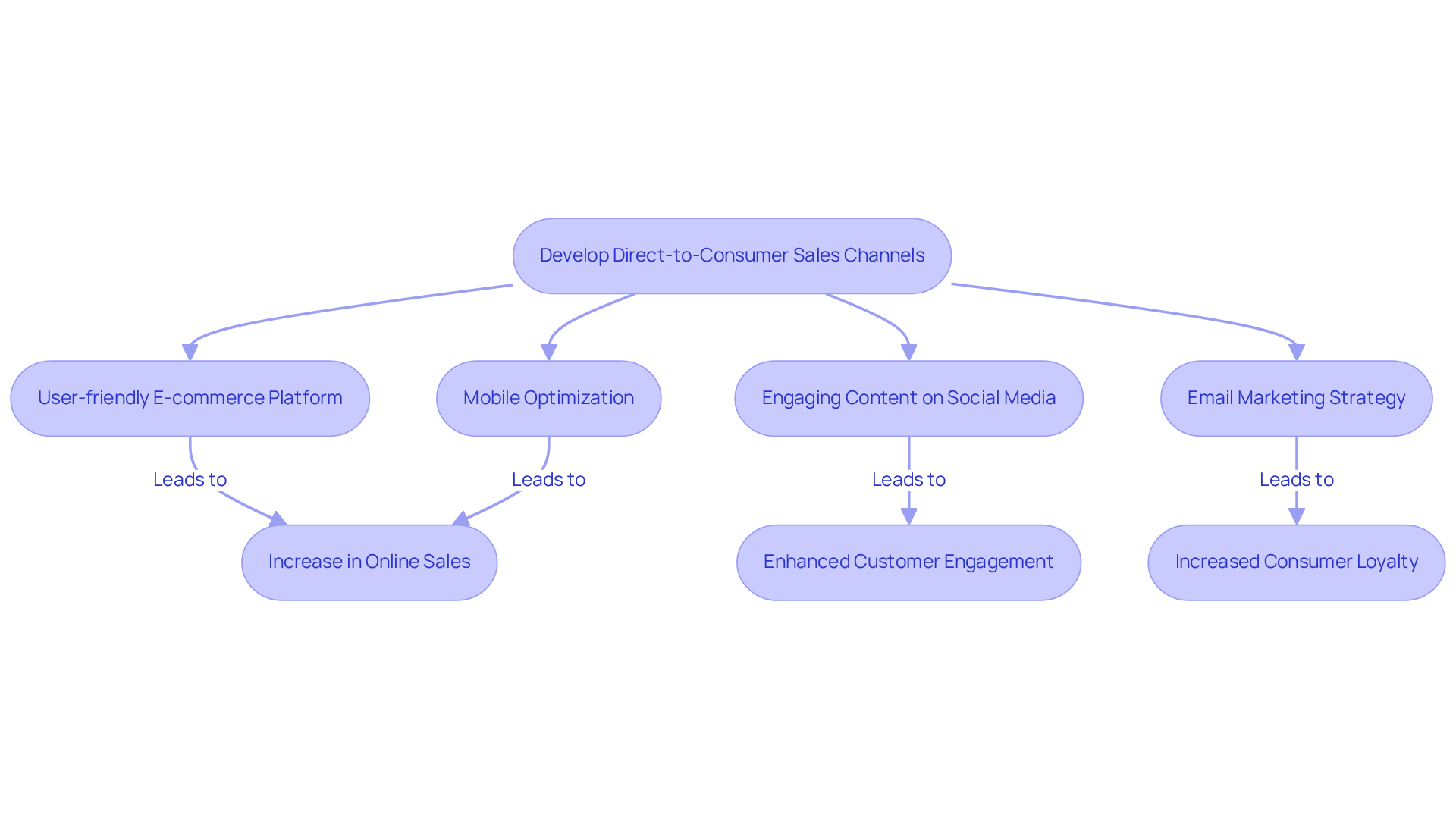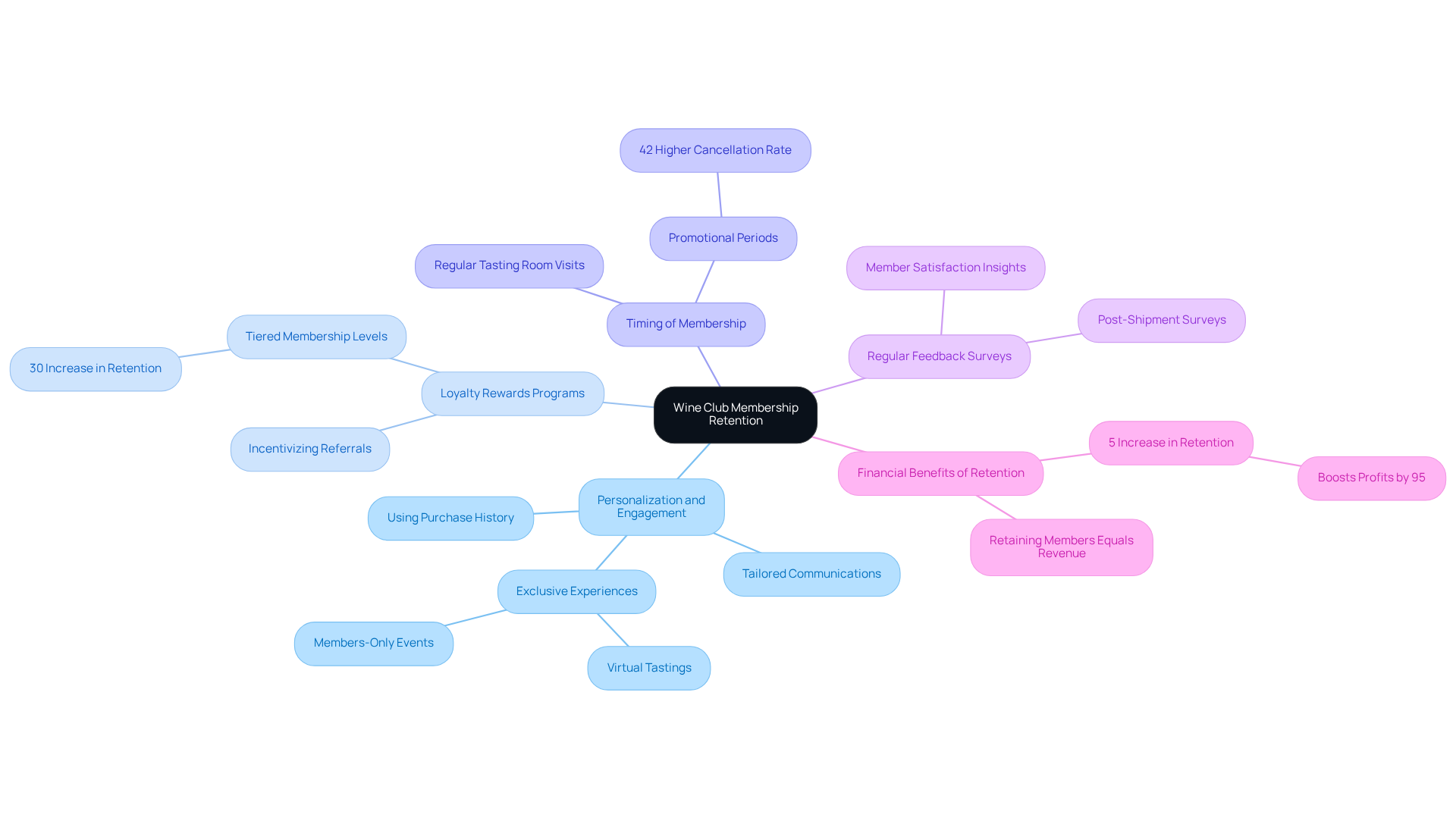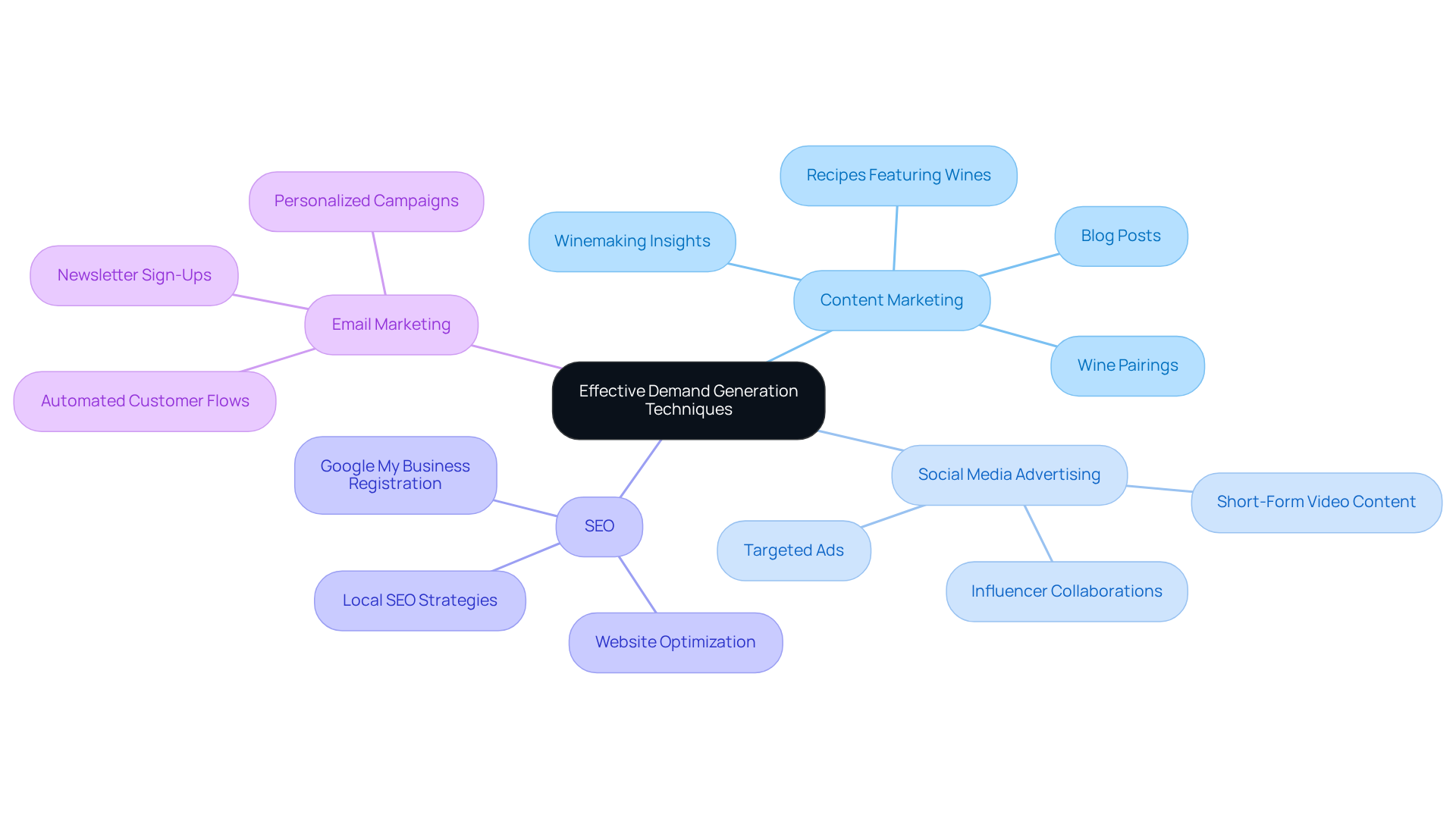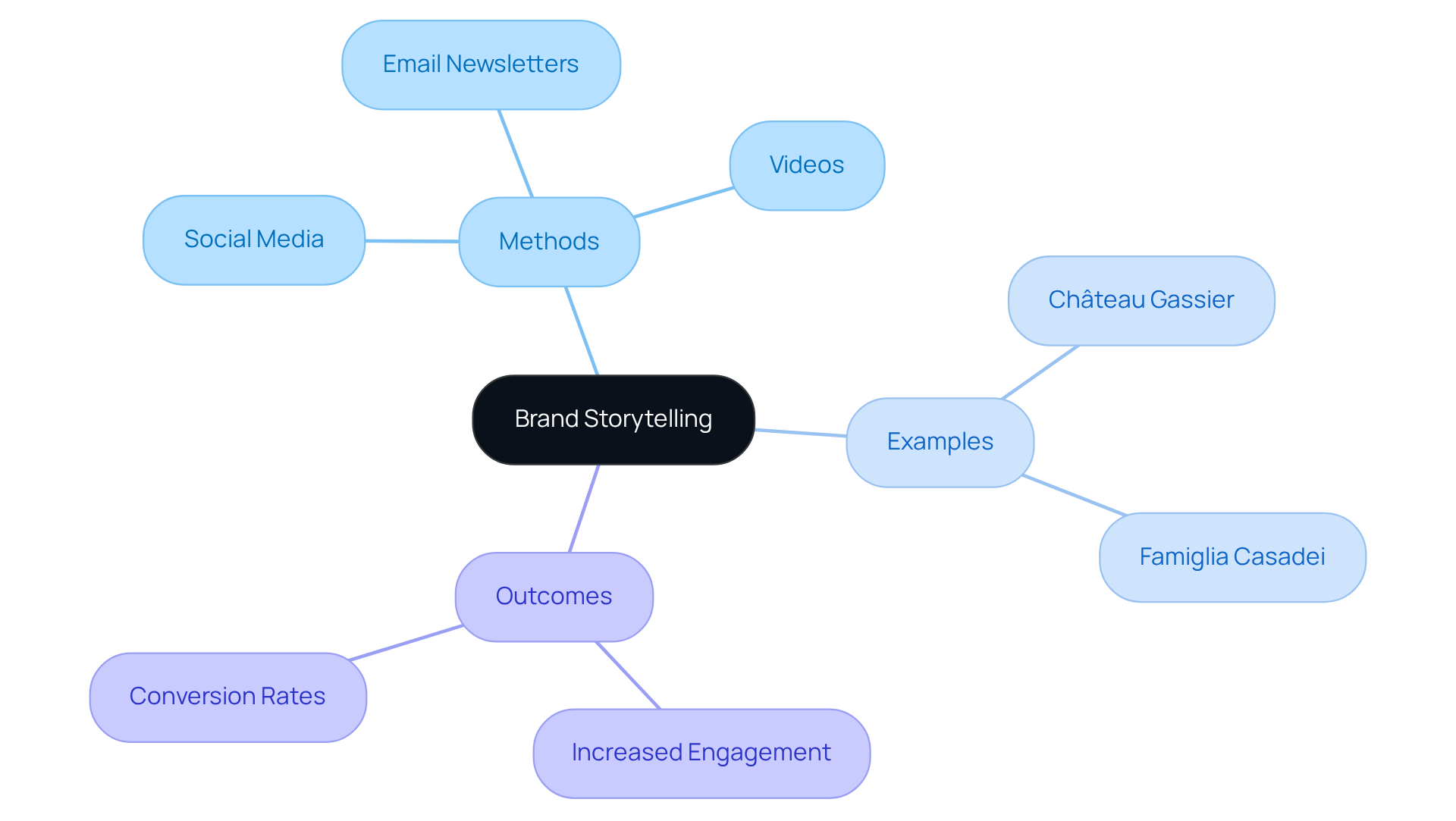Overview
This article delves into how California wineries can significantly enhance their sales through effective direct-to-consumer (DTC) strategies. It asserts the critical role of user-friendly e-commerce platforms, personalized marketing, and compelling brand storytelling. These strategies are not merely suggestions; they are proven methods that can lead to substantial increases in customer engagement and sales.
The text illustrates this potential through various case studies, providing concrete evidence of success in the field. By adopting these approaches, wineries can not only improve their market presence but also foster lasting relationships with their customers.
Introduction
The California wine industry is at a pivotal moment, where direct-to-consumer (DTC) sales have emerged as a crucial lifeline for wineries striving to thrive in a competitive market. By harnessing innovative strategies centered on e-commerce, personalized experiences, and compelling storytelling, wineries can significantly enhance their sales and cultivate lasting customer loyalty.
Yet, as consumer preferences evolve and digital landscapes shift, how can wineries effectively adapt their approaches to not only attract but also retain a dedicated clientele? This article explores proven DTC strategies that empower California wineries to transform casual buyers into committed supporters, ensuring sustained growth and success.
Develop Direct-to-Consumer Sales Channels
To establish effective direct-to-consumer (DTC) sales channels, wineries must prioritize a user-friendly e-commerce platform that effectively showcases their California wine sales. Optimizing websites for mobile devices is essential, as mobile-friendly sites can lead to a significant 58% increase in online sales. Key components such as fast loading times, detailed product descriptions, and high-quality images enhance the shopping experience, ensuring that customers are engaged and informed. Furthermore, leveraging social media platforms to drive traffic to the online store is crucial. Engaging content—such as behind-the-scenes videos and customer testimonials—fosters a sense of community around the brand, encouraging consumer loyalty.
A robust email marketing strategy is vital for nurturing leads and converting them into customers. By providing exclusive discounts or early access to new releases, wineries can incentivize purchases directly from the producer. For instance, a family-owned vineyard in Napa Valley experienced a remarkable 200% increase in California wine sales after revamping their website and launching targeted social media campaigns that highlighted their unique winemaking process and customer stories. This case underscores the significance of incorporating tailored to the requirements of family-owned vineyards, demonstrating that a thoughtful approach can yield substantial results.

Optimize Wine Club Memberships for Retention
To enhance wine club subscriptions, wineries must prioritize . This involves categorizing participants based on their preferences and purchase history, facilitating tailored communications and offers that resonate with individual tastes. Exclusive experiences, such as virtual tastings or members-only events, significantly elevate the perceived value of membership, fostering a deeper connection with the brand.
Implementing a loyalty rewards program that incentivizes referrals and repeat purchases can further bolster retention. For instance, a winery that established tiered membership levels, each offering unique benefits, experienced a remarkable 30% increase in retention within the first year. It is noteworthy that individuals who join wine clubs during promotional periods exhibit a 42% higher early cancellation rate compared to those who join during regular tasting room visits, underscoring the importance of timing in participant acquisition.
Regular feedback surveys are crucial; dispatching these surveys after shipments or at pivotal moments in the membership lifecycle yields insights into participant satisfaction and highlights areas for enhancement, ensuring that the club evolves in accordance with participant expectations.
By concentrating on these innovative DTC strategies, vineyards can forge sustainable pathways that encourage steady growth and transform casual purchasers into committed club participants. Retaining just a handful of members can translate into thousands of dollars in retained revenue, and a 5% increase in retention can elevate profits by up to 95%. This underscores the financial benefits of effective retention strategies, supported by strategic capital planning that ensures family-owned vineyards thrive for generations. Furthermore, integrating capital advisory services can enhance these strategies, equipping vineyards with the essential guidance to optimize their financial planning and growth potential.

Implement Effective Demand Generation Techniques
Wineries can significantly enhance their demand generation efforts by leveraging a strategic blend of content marketing, social media advertising, and (SEO). By producing valuable content—such as blog posts detailing wine pairings or insights into the winemaking process—wineries can attract potential customers and position themselves as industry authorities. Targeted social media advertisements effectively reach particular demographics, while strong SEO methods ensure that the establishment's website achieves high visibility in search results.
To create sustainable direct-to-consumer channels and generate reliable DTC income, vineyards should concentrate on converting casual purchasers into devoted club members through established methods. A significant case study showcases a vineyard that implemented a content marketing campaign featuring recipes paired with their wines, resulting in an impressive 50% increase in website traffic and a considerable rise in online sales. Furthermore, every $1 spent on email marketing can yield around $36 in return, making it a vital component of a broader content marketing strategy. Collaborating with influencers within the wine community can further amplify reach and enhance credibility, especially when brands partner with influencers whose values align with their own and target market.
Additionally, vineyards can benefit from Enocap's strategic capital advisory services, which provide tailored solutions for debt, equity, and acquisition opportunities, unlocking further growth potential. As vineyards adjust to changing consumer preferences, these content-driven strategies are crucial for promoting engagement and boosting sales, ultimately improving loyalty and creating growth opportunities in the competitive wine sector.

Leverage Compelling Brand Storytelling
Wineries can significantly enhance customer engagement by leveraging that highlights their unique history, values, and the passion behind their wines. This approach not only captivates attention but also builds a deeper connection with customers. Effective dissemination of this storytelling can occur through various channels, including social media, email newsletters, and the winery's website. Visual storytelling, particularly through videos showcasing the vineyard and winemaking process, has proven to be an effective strategy for increasing engagement and driving predictable DTC revenue. Encouraging customers to share their own stories and experiences with the brand fosters a sense of community and connection, transforming casual buyers into loyal club members.
For instance, Château Gassier shifted from a product-driven narrative to one that emphasizes their family history and sustainability efforts. This transition led to increased customer engagement and loyalty, as customers began sharing personal stories about their visits, reinforcing the brand's identity and deepening connections. Statistics reveal that storytelling can result in a 24% rise in email open rates and an 18% enhancement in conversion rates, illustrating the tangible benefits of this approach. Moreover, Famiglia Casadei reported an 18% rise in conversion rates after adopting predictive analysis tools, further demonstrating the effectiveness of storytelling in marketing strategies.
By integrating these storytelling strategies, vineyards can create a more immersive and authentic experience that resonates with today's discerning wine buyers. Furthermore, strategic capital planning can enhance these efforts by ensuring that family-owned wineries have the resources to sustain and grow their storytelling initiatives, ultimately thriving for generations.

Conclusion
Establishing effective direct-to-consumer (DTC) sales strategies is paramount for California wineries aiming to enhance their sales and forge enduring customer relationships. By prioritizing user-friendly e-commerce platforms, personalized wine club memberships, and compelling brand storytelling, wineries can cultivate a seamless and engaging experience that resonates deeply with consumers. This integration of strategies not only boosts sales but also cultivates loyalty, ensuring customers feel a strong connection to the brand.
Key insights discussed throughout the article underscore the necessity of:
- Optimizing websites for mobile use
- Leveraging social media for brand engagement
- Implementing targeted email marketing campaigns
The success stories of wineries that have effectively increased their sales and retention rates through these methods highlight the power of a comprehensive DTC approach. Furthermore, the significance of storytelling in forging emotional connections with customers is critical; it transforms a simple purchase into a meaningful experience.
In the competitive landscape of wine sales, embracing these innovative DTC strategies is essential for sustainable growth. Wineries must adapt to evolving consumer preferences and invest in their online presence, customer engagement tactics, and brand narratives. By doing so, they not only amplify their sales potential but also secure a cherished place in the hearts of wine lovers for generations to come.
Frequently Asked Questions
What is the importance of a user-friendly e-commerce platform for wineries?
A user-friendly e-commerce platform is essential for wineries to effectively showcase their California wine sales and enhance the shopping experience for customers.
How does mobile optimization impact online sales for wineries?
Optimizing websites for mobile devices can lead to a significant 58% increase in online sales, making it crucial for wineries to ensure their sites are mobile-friendly.
What key components should wineries focus on to improve their online shopping experience?
Wineries should focus on fast loading times, detailed product descriptions, and high-quality images to engage and inform customers effectively.
How can social media be utilized to benefit wineries' direct-to-consumer sales?
Wineries can leverage social media platforms to drive traffic to their online store by sharing engaging content such as behind-the-scenes videos and customer testimonials, fostering a sense of community and consumer loyalty.
Why is email marketing important for wineries?
A robust email marketing strategy is vital for nurturing leads and converting them into customers by offering exclusive discounts or early access to new releases, incentivizing purchases directly from the producer.
Can you provide an example of a winery that successfully increased sales through e-commerce strategies?
A family-owned vineyard in Napa Valley experienced a 200% increase in California wine sales after revamping their website and launching targeted social media campaigns that highlighted their unique winemaking process and customer stories.




